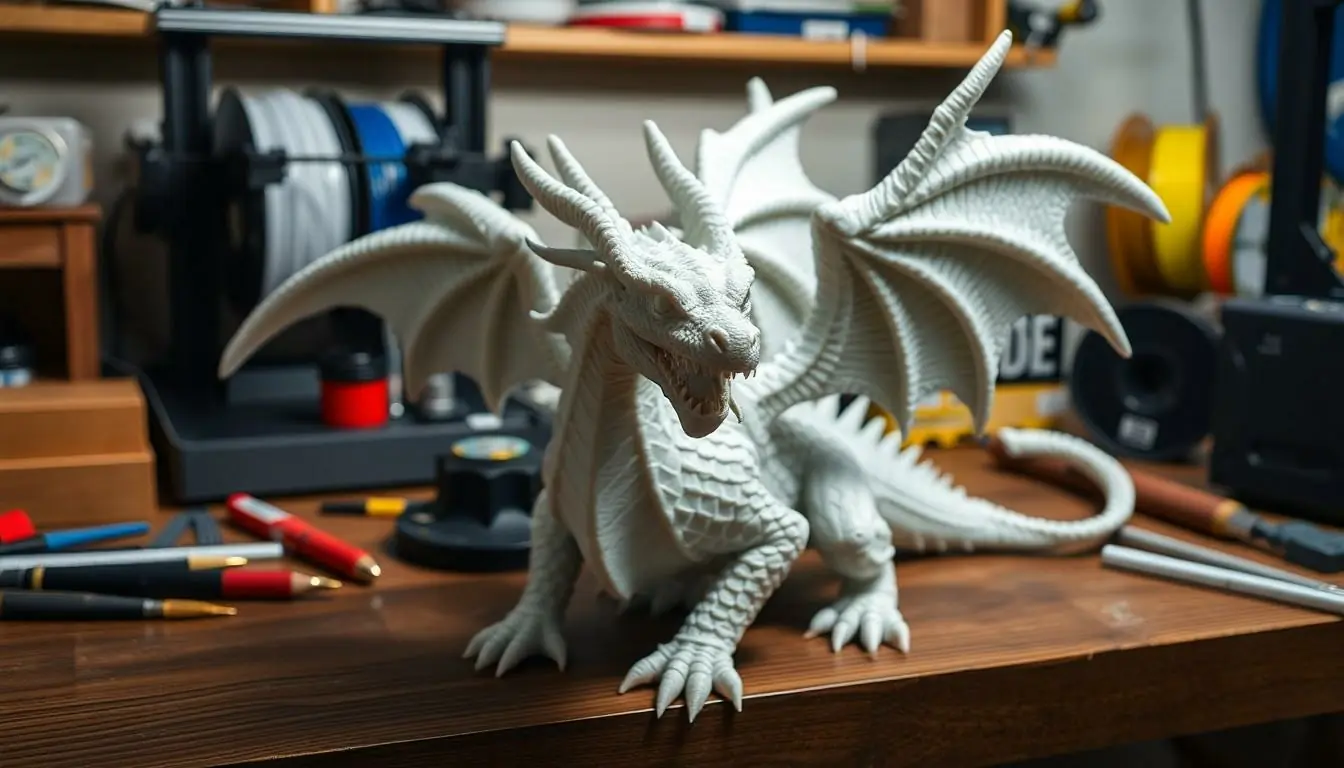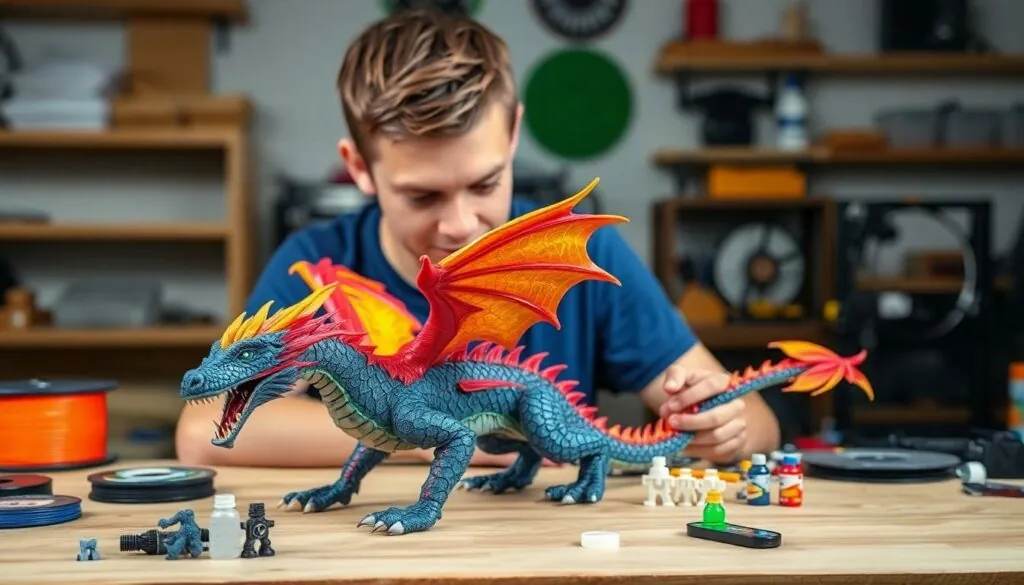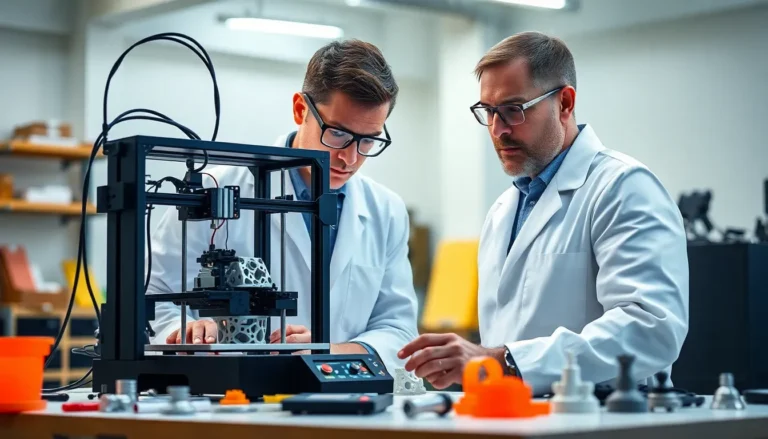Imagine a world where your wildest fantasies take shape right before your eyes. Enter the realm of 3D printing dragons, where creativity meets technology in a fiery fusion of imagination. Whether you’re a seasoned hobbyist or just someone who thinks dragons are cooler than a regular pet, this is your chance to bring those mythical beasts to life—without the fire-breathing chaos.
Table of Contents
ToggleOverview of 3D Printing Dragons
3D printing dragons offers a unique blend of artistry and technology. Creators use this innovative process to transform digital designs into tangible models. Various materials, like PLA and resin, serve as the foundation for these dragon creations.
A range of design options exists, catering to different skill levels. Beginners often start with simpler designs, while seasoned designers push boundaries with intricate details. Software such as Blender and Tinkercad allows users to craft personalized dragon models.
Printing techniques vary based on the chosen printer and material. Fused deposition modeling (FDM) remains popular due to its accessibility. Stereolithography (SLA) provides high precision, ideal for detailed designs.
Dragon enthusiasts find inspiration from various sources. Fantasy literature, movies, and video games influence design choices. Online communities also serve as platforms for sharing techniques and artwork.
Post-printing processes enhance the final result. Sanding and painting can add realism and depth to the printed dragons. Customizing colors and textures allows for a personal touch that reflects the creator’s vision.
Applications extend beyond mere hobbyist projects. Educational institutions benefit from 3D printing technology as a tool for teaching concepts in design and engineering. Additionally, filmmakers leverage this technology to produce props and visual effects.
3D printing dragons showcases the growing intersection of creativity and technology. With ever-evolving methods and materials, this craft invites enthusiasts to push the limits of their imagination.
Popular Techniques for 3D Printing Dragons

Various techniques exist for 3D printing dragons, each offering unique benefits suited to different project needs.
FDM vs. SLA Printing
Fused deposition modeling (FDM) is the most common method, known for its accessibility and affordability. It extrudes thermoplastic filament layer by layer, making it ideal for creating large dragon models. Stereolithography (SLA), on the other hand, utilizes a UV light to cure liquid resin, producing high-resolution details. Precision defines SLA prints, which often results in more intricate designs. When choosing between these methods, consider the desired detail level and project scale, as FDM suits larger prints and SLA excels in fine details.
Material Considerations
Material choice plays a vital role in 3D printing dragons. PLA represents a popular filament known for its ease of use and biodegradable properties. It works well for intricate filigree designs and large models alike. Alternatively, resin provides superior detail and smooth finishes, perfect for displaying intricate dragon features. Nylon and PETG may offer added strength and flexibility for more dynamic poses. Evaluating the final use of the model and desired aesthetics will guide material selection, ensuring the best results.
Design Considerations for 3D Printing Dragons
Designing a dragon for 3D printing involves strategic decisions that influence the final product’s aesthetic and structural integrity.
Choosing the Right Model
Selecting the right model plays a crucial role in the design process. Simple designs work better for beginners, while experienced designers may prefer complex structures. Sourcing models from online libraries like Thingiverse saves time, but creating custom models in software such as Blender can provide a unique touch. Considering the scale of the dragon impacts both detail and printability. Larger models may require a robust printer with a bigger build volume, ensuring stability during printing.
Customization Options
Customization offers opportunities to enhance visual appeal and personalize designs. Artists can modify colors, scales, and features to fit their vision. Utilizing texture mapping adds depth to the model, making it more visually striking. Many 3D printing software options allow for alterations in parts of the structure, enabling adjustments for articulation or poseability. Adding accessories like wings or fire breath contributes further to design uniqueness. Taking advantage of available finishing techniques, such as painting and weathering, elevates the overall look, ensuring the dragon stands out.
Post-Processing Techniques
Post-processing techniques enhance the final appearance and structure of 3D printed dragons. Creators often employ various methods to achieve a polished look, ensuring their designs truly stand out.
Painting and Finishing
Painting is a common technique for adding realism to 3D printed dragons. Many artists start with a primer to help paint adhere better. Acrylic paints work well for vibrant colors and can be mixed for unique shades. Airbrushing provides smooth, even coverage, allowing for intricate detail. Finishing techniques like sealing with a clear coat protect the paint and enhance gloss. Weathering is an effective method to give dragons an aged or battle-worn appearance, using washes or dry brushing for added texture.
Assembly Tips
Assembly can become crucial for complex dragon models. Start with a clean workspace to ensure organization. Larger pieces often require support structures, like glue or screws, for stability. Align parts carefully to avoid gaps or misalignments. It’s essential to test fit components before secure attachment to guarantee a proper fit. Using clamps can aid in holding parts together while adhesives cure. Patience is necessary during assembly, as rushing may lead to mistakes.
Applications of 3D Printed Dragons
3D printed dragons find various applications, extending beyond mere aesthetics and into practical realms.
For Hobbyists and Collectors
Hobbyists appreciate 3D printed dragons as unique collectibles, showcasing creativity. Enthusiasts often customize their models, creating distinct pieces that reflect their personal style. Displays in homes or studios become conversation starters, sparking interest among visitors. Additionally, many collectors participate in online communities, sharing designs and techniques that enhance skill development. Participation in competitions leads to recognition and accolades for innovative designs. For dedicated hobbyists, 3D printing dragons fosters a deeper connection with imaginative worlds, allowing for continuous exploration of artistry.
In Educational Settings
Educators utilize 3D printed dragons to engage students in design and engineering concepts. Project-based learning experiences enhance problem-solving skills, with students designing their dragons using software like Tinkercad. Incorporation of these projects into curricula promotes teamwork, as students collaborate on creation and presentation. Visual arts and engineering classes see increased interest when students bring fantasy creatures to life. Furthermore, utilizing 3D printing technology reinforces lessons in physics, mathematics, and geometry. It’s an innovative way to combine creativity with technical skills, making learning hands-on and effective.
3D printing dragons opens up a world of creativity and innovation for enthusiasts at all levels. By merging artistry with advanced technology, creators can bring their fantastical visions to life. The variety of design options and printing techniques available ensures that everyone can find a project that suits their skills and interests.
Whether for personal enjoyment or educational purposes, these models foster creativity and problem-solving. As hobbyists share their creations and techniques within online communities, the possibilities continue to expand. This unique blend of imagination and technology not only enriches individual experiences but also encourages collaboration and learning in exciting new ways.



